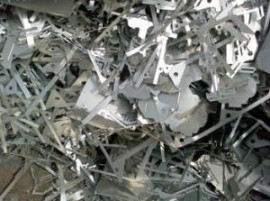
Recycled aluminum is energy saving, environmental protection, the labor-intensive industries, compared with electrolytic aluminium, energy consumption is less than 5%, according to industry association survey, recycled aluminum industry industrial added value ten thousand yuan BiaoMei 0.7 0.9 tons, the energy consumption is 30% of the average (2.59 tons) in China.
In recently introduced China’s the eleventh five-year plan, clearly put forward “to create a number of more than 300000 tons of production capacity of recycled aluminum demonstration project”. A little-known industry is to attract people’s eyeballs.
The main force of aluminium exports
Raw material is aluminium scrap, aluminium products are casting aluminum alloy, namely the commodity classification of the tariff “aluminum alloy” not forged products. According to the China nonferrous metals industry association renewable metal branch information, export aluminium alloy not forged exports accounted for about 85%, and all in the form of processing trade. Only in the first half of 2005 aluminum alloy not forged, after a 5% export tariffs are imposed on to cause secondary aluminum exports fell sharply. Recycled aluminum export recovery growth last year, exports of 274300 tons, 1 – October accounts for 87.47% of the aluminum exports not forged.
According to customs statistics, last year 1, exports of 313000 tons of aluminum alloy, not forged in October from a year earlier exports of 129000 tons dozen growth 1.4 times. Some argue that the aluminum alloy not forged export growth may be the cause of the electrolytic aluminium exports disguised behind it. Actually, this kind is are weak. Because for aluminium industry, is not a normal business year in 2005, the national a 5% export tariff on aluminium alloy not forged, the influence of the regenerative aluminium exports fell by 38% in 2004. If the exports in 2007 with the same period in 2004, compared to 220000 tons of dozen growth was only 42%, belong to the normal recovery growth. Therefore, predominantly secondary aluminum alloy not forged export quantity growth is normal, does not appear at the beginning to worry about aluminium covert exports.
Aluminium as aluminum alloy, not forged the export tax rebate was cancelled along with electrolytic aluminium in 2005, and imposed a 5% export tariff, after the ministry of finance, national development and reform commission and other ministries and in-depth research, six months after the state council for approval to cancel imposing a 5% export tariff policy. After the policy adjustment, the relevant government departments to realize, maintain regeneration with the different characteristics of electrolytic aluminium and aluminium significance for the steady development of aluminum industry, so in the last year the country further regulation policy, recycled aluminum industry is not affected.
New areas of circular economy
Recycled aluminum is energy saving, environmental protection, the labor-intensive industries, compared with electrolytic aluminium, energy consumption is less than 5%, according to industry association survey, recycled aluminum industry industrial added value ten thousand yuan BiaoMei energy consumption is 0.7-0.9 tons, is China’s 30% average 牗 2.59 tons by the dozen; Pollutants fell more than 97% of the electrolytic aluminum, secondary aluminum industry and its related industries provides at least 600000 jobs. Recycled aluminum industry is suitable for China’s national conditions, the country attaches great importance to the development, was listed in the circular economy construction in key areas of our country.
Aluminium is a young industry of our country. Domestic waste aluminum payback period has not yet arrived, recycled aluminum market demand also in cultivating, can only rely on the domestic market reached a reasonable size needed for modern production. Therefore, through more than half of the scrap aluminum is import in our country at present, but also about 15% products are exported. In recent years, China’s aluminium industry with the international market rapidly promote industry scale and the level of technology. Such as non-ferrous metal co., LTD., Shanghai new lattice, in 2005 built the first modernization in China, 300000 tons of production capacity, recycled aluminum factory, by the national listed in the first circular economy pilot enterprises. Aluminum corporation of China (601600) of the company in Qingdao 200000 tons of recycled aluminum project will be completed in 2007. Recycled aluminum industry concentration, clean production capacity is significantly elevated, past “small, scattered and disorderly” industry status is improving. Only after these modern aluminium factory fully mature, the backward, primitive, environmental pollution of small workshops can be eliminated.
In the current environment, recycled aluminum industry urgently needs a stable development space. If suddenly tariffs policy adjustment, the secondary aluminum enterprises will first hit, as its exit from the international market, the domestic market and can’t hold, is facing the fate of the mill type enterprise out of the market has been established on the international aluminium scrap market resources to control the initiative will also be countries such as Japan, South Korea, India preemption. For in the key period of industrial level of secondary aluminum industry, will cause catastrophic effects.
For secondary aluminum industry, scale is the basic guarantee to realize modernization. Our larger secondary aluminum enterprises after years of effort, has built the global coverage of aluminium scrap resources procurement network, has certain advantages, environmental protection, product quality control is better also, can sell, give attention to two or morethings in do not take up domestic resources, do not use under the condition of the domestic market, provide a large number of employment opportunities and revenue. If the loss of the international market, the enterprise will lose mass support immediately. In under the condition of the waste recycling system is not perfect, the enterprises in the domestic market, will operate their focus to the domestic process will take at least 5 to 10 years.








